The Fundamentals First
Reading Time: 30 minutes.
“Success is the sum of small efforts, repeated day-in and day-out.” – Robert Collier
Despite our best intentions, we cannot wish things into existence with ideas alone. Entertaining hypotheticals makes for a pleasurable pastime (I do so often), but imagination unfortunately does not equate to reality. If only it were so simple to produce tangible outputs. While ideas can be plentiful, easy to come by, and devoid of pragmatism, execution honestly confronts the biting complications of fulfilling a vision, requiring micro-decisions throughout its entirety to completion. Execution is rooted in practicalities, time-consuming, and distinctly difficult to carry out. Thus while execution is rare, it is altogether more valuable and a true measure of the merits in contributions. Indeed, Rome was not erected in a day.
Execution originates from the fundamentals, which have to come first before the rest can follow, such as high-level ideas. The basics should be in place before the more advanced activities can really function and take effect. You can’t sprint if you can’t run, you can’t run if you can’t walk, and you can’t walk if you don’t first crawl. The overriding challenge is creating something from nothing. To shape and form an outcome when one has not yet existed. To show up every morning and grind through the difficulties. But we may not always be ready to commit over the course of the long-term. We may opt for alluring appearances, failing to realize that style over substance amounts to an empty and baseless structure. There is no such thing as a free lunch, there are rather degrees of trade-offs.
I have asked myself a litany of questions during my struggles through the years. “What is the roadmap to success? What are the building blocks and stepping stones to shine? How does one build the foundations to venture further and higher in the realm of success? What are the components of laying down the tracks towards achievement further down the road? How do we guide our decisions – is it with the heart or the mind?”
The essential question to me it seems, then, is how we can elevate ourselves above the noise and preserve longevity of outperformance to do well – not just for today or tomorrow, but for weeks, months, and years ahead.
I propose that an exemplary track record, a fine reputation, and enduring integrity are the important preconditions for lasting trust, credibility, and influence.
The Fundamentals and the Core Enablers
Track record, reputation, and integrity are the fundamentals that must come first to consequently trigger the core enablers of trust, credibility, and influence. The left-hand side of the equation flows through to the right-hand side with the passing of time, not the other way around. One follows the other. Trust, credibility, and influence do not miraculously surface from nowhere. These enablers are the direct culmination of fundamentals melded with persistent application, and their implications for our lives are vast and considerable.
“Success is neither magical nor mysterious. Success is the natural consequence of consistently applying the basic fundamentals.” – Jim Rohn
After much introspection and collating observations, I have (humbly) assembled a holistic framework that I hope may help govern decisions to allow us to excel in the pursuit of goals to which we commit ourselves. My thesis is that with the fundamentals first, we may drive enablers of success and breakthroughs that are applicable in all areas of our lives. I explore these concepts and the dynamics between them with theory and personal stories to determine how they can lead to a step change for us to move past the status quo.
Table of Contents
Track Record
Reputation
Integrity
Trust
Credibility
Influence
The Fundamentals First
“The world is changed by your example, not your opinion.” – Paulo Coelho
“History doesn’t repeat itself, but it does rhyme.” – Joseph Anthony Wittreich
Track Record
While this term may take on various interpretations, I would broadly define it as education (formal and informal), skills developed, knowledge learned, relationships formed, and resources acquired from exposure to different events & roles. In terms of professional development, the expression is “career capital”: “skills, connections, credentials and resources you gain from a job that put you in a better position to make a difference in the future.” Track record amounts to performance over an extended period of time. In finance, one can back-test and measure scenarios for comparison purposes, tweaking and adjusting for differing results. In real-life, we are not afforded such luxuries and are rather beholden to the consequences of the past and present on a daily basis that dictate future trajectories.
Aggregating our track record over time yields a cyclical time series that can be plotted against time as such:
Performance Over Time
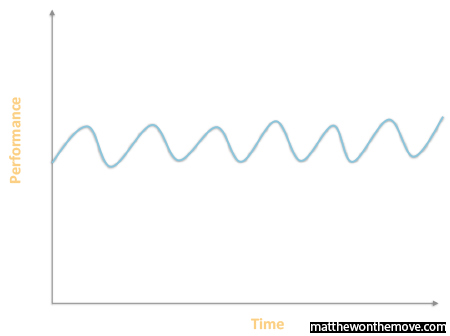 Source: matthewonthemove.com
Source: matthewonthemove.com
As mentioned previously, the central obstacle we all have to overcome is to fashion something from nothing. Where there was once a 0 there shall now be 1 after we have spent our concerted energies. What many of us have to cope with is that a track record is especially difficult to lay down in the early stages with the many direct and indirect barriers to entry. These range from experience, qualifications, academic scores, learning curve, first impressions, fiercer competition, etc. There are all sorts of hurdles to finding an opening from which to commence on the journey of our discrete track record. I frequently tell myself that in the globalized world there are an increasing number of young and hungry graduates who are willing to work twice as hard for half the pay. This is not a subject I will delve into, but the forces of disruption and globalization are sweeping the world with countless ramifications on governments, businesses, and individuals alike that will play out strongly in the 21st century. What is undeniable is that the pressures for starting to build out one’s track record are intensifying and proving all the more demanding.
As time unfolds, friction eventually reduces and the inertia that was once impeding movement circulates in your direction instead of against it. Soon enough, it becomes progressively easier to build on earlier investments. One falls on top of another, progressively building on and leading to more successes.
As one goes along, an identifiable trace of information cumulates and is left behind, referred to as a “sample.” This sample serves as proof points used for evaluation, reinforcing one’s expertise that breeds confidence from external parties around one’s abilities. Yet, the caveat is that individuals tend to overly exaggerate the implications from smaller samples of information, which is known as the law of small numbers. Contrary to how we may read a small sample of seemingly extraordinary numbers as being truly representative, there is statistically more luck in the outcomes of small samples versus larger ones. This false perception is a mental bias, failing to incorporate the regression to the mean – extreme measurements ultimately converging to the long-term average – which occurs more deeply within narrower data sets than than in larger samples.
Extending Your Sample
Source: matthewonthemove.com
The objective, then, in constructing a track record is to widen the sample of information so that the baseline numbers are well-established and validated, thereby reducing any doubts of luck and one-off events to outside evaluators. More data points for a more populated sample instills greater robustness that begets factual soundness. From the expanded sample of data points drawn up against time, an average (or mean) can be derived that approximates an expected standard for the future.
Average Performance Over Time
Source: matthewonthemove.com
How do creditors evaluate the credit rating of a prospective borrower? Their judgments are based on the card utilization history of the debtor. While the past may not offer guarantees, it does offer reasonable reference points of what may occur in the future based off this track record.
Sustaining performance can be fraught with difficulty and frankly exhausting if not managed prudently. I’ve hit a wall before in the past to put it plainly. Forming a track record requires physical and emotional stamina. And everyone has their own range of performance (“range-bound”) with respective peaks and valleys. We all have our highs and lows that affect our performance levels. But we aren’t constrained to these wavelengths pre-determinedly. We have to rebel against this notion of a fixed mentality, breakthroughs can and do happen with a growth mindset.
In the new volatile, uncertain, complex, and ambiguous (VUCA) world that we have entered, it is imperative for job candidates to separate the signal from the noise and connect the dots. This also holds true generally for everyone. In the article “21st-Century Talent Spotting,” Claudio Fernández-Aráoz puts forth that potential is the most important aspect in looking for outstanding performance from a candidate, as opposed to the traditional metrics of intelligence. The specific qualities that make up potential are:
- Curiosity: openness to learning and change;
- Insight: synthesizing information to discover hidden possibilities or solutions;
- Engagement: emotional intelligence for an ability to persuade;
- Determination: grit, or “the ability to work hard and respond resiliently to failure and adversity.”
In a VUCA context where “knowledge is becoming increasingly commoditized,” employability does not reside in idly possessing information. It actually turns out that within knowledge there are explicit vs. tacit types. Explicit knowledge can be learned through books and literature, whereas tacit knowledge confers competitive advantage as it is inherently harder to replicate (think chess, flying airplanes, interpersonal skills). Tacit knowledge ring-fences an individual with protective surroundings that defend against outside threats or shocks: “what you can do with that knowledge that will differentiate you” (Source). This helps to secure endurance as we strive to develop our track record. Indeed, transferrable skills and “capabilities, not just knowledge” are vital to charting one’s course.
In my own case, performance was turbulent in early stages of effectuating my track record. Admittedly it can still be very erratic in its curves, unpredictable even as living abroad amplifies upward and downward sentiments. But a step change came from a mental shift of how I endeavor to frame circumstances, in that they are transient and that we can take ownership with an internal locus of control.
Breaking into New Frontiers
Source: matthewonthemove.com
For some, it’s about finding and capitalizing on a new opportunity. Landing the job they always wanted, or being accepted into the educational program they applied for. While it differs per the individual, the ensuing post-breakthrough performance entails better results with less instability. To be sure, it’s not all smooth sailing and requires continued dedication, though we must come to terms with the notion that “your behavior today is a strong indicator of your behavior tomorrow.”
I try working with this mind, although it can be a daily battle marked by victories as well as defeats. As a whole, the aspiration is for the wins to exceed the losses as we carve new averages in our track record. This relates to forming habits that promote virtuous patterns of behavior whereby small steps add to large strides that give rise to a reputation.
“You can’t build a reputation on what you are going to do.” – Henry Ford
Reputation
Reputation is the perception proceeding from the imprint of a track record. Reputation rests on two principal pillars that we use predominantly in the broad contours of how we define someone: warmth and competence.
As the authors of a study on these universal dimensions of reputation wrote: “In sum, when people spontaneously interpret behavior or form impressions of others, warmth and competence form basic dimensions that, together, account almost entirely for how people characterize others .”
We’ve all been awkward during the sensitive moments of first impressions at some point in our lives, one of the sticking points of growing up and socializing by trial and error. I’ve surely been likened to a buffoon or inadvertently offended many (to whom I would extend my apologies). And I’ll surely ruin first impressions for more people.
At their essence, reputation and integrity (more on this later) take many years to build and create, although they can be revoked in an instant. They require constant attention and careful maintenance to nurture. It’s equivalent to grains of sand gradually and painstakingly added to the account of reputation, while an error risks undermining all of this good work with one fell swoop such as a shovel decimating a sand castle on the beach. In finance parlance, the upside is limited while the downside is limitless. Fascinatingly, as I’ve come to discover, it is difficult to overstate how ingrained reputation is within our lives.
“Charisma is not so much getting people to like you as getting people to like themselves when you’re
around.” – Robert Brault
Warmth
Attributes like fair, generous, helpful, honest, righteous, sincere, tolerant, and compassionate.
- Is this person warm or cold to me? Warmth, or likeability, allows one to construct an opinion of the person based on feelings and impressions, which are not necessarily backed by facts, but rather emotions or intuitions.
- “The Heart” or Character
As described in a Harvard Magazine article of Amy Cuddy, a social psychologist who has studied the psychology of reputational impressions for over a decade:
“Someone who does something nice, like helping an elderly pedestrian across an intersection, is not necessarily seen as a generally nice person. But a single instance of negative-warmth behavior–kicking a dog, say–is likely to irredeemably categorize the perpetrator as a cold person.”
In terms of warmth, then, one negative action is firmly generalized into a poor or undesirable character. Moreover this warmth / cold attribute strikes us more powerfully than competence as it relates to social cues for whether someone is a friend or foe.
The magazine clip goes on, “Warmth is not only perceived first, but accounts for more of someone’s overall evaluation than competence.”
The counterpart of reputation is competence.
Competence
Traits such as clever, skilled, creative, talented, efficient, intelligent, knowledgeable, etc.
- Ability to execute on intentions, to follow through on their word.
- “The Mind” or Function
Competency must be proved to definitively clear any uncertainties, and once it has been demonstrated the marks linger. While a one-off negative competency will be attributed to an unlearned skill at that particular instance and not necessarily indicative of deftness, positive competence is incorporated comprehensively into the full assessment of an individual.
As Amy Cuddy sums up: “Positive competence is weighted more heavily than negative competence.”
Reputation Bottom Line: a single positive-competent (capable) or negative-warmth (cold) action is revealing of one’s character, conclusively solidifying his or her reputation in the eyes of compatriots. The decisive factor is warmth as people prioritize identifying if a certain person is an ally (safety) or enemy (threat), signifying the prominence of “assessing other people’s intentions before determining their ability to carry out those intentions,” as written in the universal dimensions study. This feeling-first disposition relates to the survival instinct present in all organisms.
The dimensions of warmth and competence can be mapped against one another to form separate archetypes, or buckets, characterizing how we may designate others brought on by their reputation within a matrix:
Reputation: Warmth vs. Competence
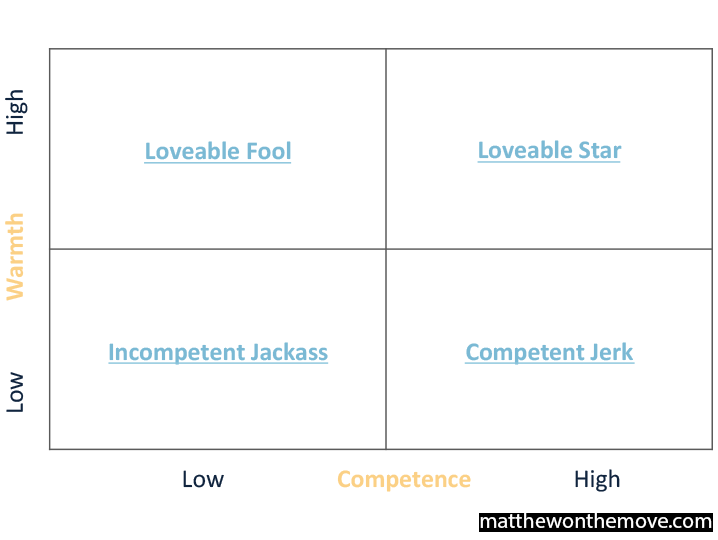 Sources: Universal dimensions of social cognition: warmth and competence, The BIAS Map: Behaviors from Intergroup Affect and Stereotypes
Sources: Universal dimensions of social cognition: warmth and competence, The BIAS Map: Behaviors from Intergroup Affect and Stereotypes
The matrix organizes our mental portrayal into four combinations:
- High Competence, Low Warmth: The Competent Jerk
- Low Competence, Low Warmth: Incompetent Jackass
- Low Competence, High Warmth: Lovable Fool
- High Competence, High Warmth: Lovable Star
These four quadrants can be broken down as summarized in the article “Competent Jerks, Lovable Fools, and the Formation of Social Networks” (which I’ll call “social network study”):
“ The competent jerk, who knows a lot but is unpleasant to deal with; the lovable fool, who doesn’t know much but is a delight to have around; the lovable star, who’s both smart and likable; and the incompetent jerk, who…well, that’s self-explanatory.”
How we depict one another into categories of reputation in our minds can have ramifications on our actions. From these broad determinants on the axes of warm / cold and competent / incompetent, there are varying reactions that outsiders / external individuals employ. This interaction can extend across a spectrum of a set of actions – from constructive, to neutral, and even critical.
Reputation and Behavior
Note: Parentheses: emotions; Blue: behavior; Red: outcome
Source: Connect Then Lead
Overlaying feelings on top of these characterizations yield differing emotions, behaviors, and outcomes in how we evaluate the categories that we form:
- High Competence, Low Warmth: Envy the competent jerk – include them resentfully only when necessary and inhibit if the occasion presents itself.
- Low Competence, Low Warmth: Contempt for the incompetent jackass – actively ignore and exclude from interactions altogether.
- Low Competence, High Warmth: Pity the lovable fool – passively neglect and help if and when engaged.
- High Competence, High Warmth: Admiration for the lovable star – actively enable and collaborate inclusively to advance intentions.
How we define someone’s reputation along warmth and competence sets the precedent for real-world interfacing with that person. The choices are sharply contrasted depending on where they fall along this spectrum within the matrix. This dynamic cuts across organizations and contexts.
It goes without saying that the most desired are the lovable stars and most avoided are the incompetent jackasses. The former is a win-win situation while the latter is a lose-lose. Most would agree.
This was noted in the social network study:
“Our research showed (not surprisingly) that no matter what organization we studied, everybody wanted to work with the loveable star, and nobody wanted to work with the incompetent jerk.”
But what is more nuanced and interesting in my view is how we handle loveable fools and competent jerks. The same research undertaken over a decade ago by Harvard and Duke University professors indicates that despite what we may express aloud, people actually usually prefer working with the loveable fool than the competent jerk:
“If you were faced with the need to accomplish a task at work, what sort of person would you pick to help you — someone able to get the job done or someone enjoyable to be around? Studies done in four very different organizations consistently showed that people would choose a “lovable fool” (someone who, to varying degrees, is more likeable than competent) over a “competent jerk”
Why is that? We favor those who exhibit signs of warmth, assigning a premium to its presence as humans value socializing, group membership, and being understood. It’s part of what makes us human. The social network study explains:
“We found that if someone is strongly disliked, it’s almost irrelevant whether or not she is competent; people don’t want to work with her anyway. By contrast, if someone is liked, his colleagues will seek out every little bit of competence he has to offer.”
I can vividly attest to this myself as I would avoid a certain team member in the past who had a history of a “cold” temperament (to put it mildly), rubbing many the wrong way in previous instances. Despite his extensive institutional memory from years within the organization, I consciously steered clear for any projects or tasks. He was eventually sidelined and left the group to my intense relief. One incompetent jackass can ruin team morale and pull down performance with far-reaching consequences of immense detriments to a team and harmful knock-on effects to the greater organization. It begs the question if a “no a-hole rule” should be part of policies and human resource procedures.
One clear and critical takeaway is that it is nearly impossible to be disliked (low warmth) and manage colleagues well (i.e. leveraging high trust, credibility, and influence) – only 27 of 51,836 leaders in a cross-industry survey were rated low on the likeability scale but high on their effectiveness. The evidence is convincing: you can’t be disliked and inspire teams to rise to their best.
This likeability aspect touches on the halo effect, which takes over to aide social comparisons. Just as the famed “first 90 days” of a new job are critical, as first impressions are hard to shake off or alter, the same holds true for your degree of warmth (remember the reputational backlash from a negative one-off event, like kicking a dog, is specially hard to undo). So it is doubly significant to not necessarily solely lead by strength or intelligence (competence), but to connect on a humanistic level (warmth):
“A growing body of research suggests that the way to influence—and to lead—is to begin with warmth. Warmth is the conduit of influence: It facilitates trust and the communication and absorption of ideas. Even a few small nonverbal signals—a nod, a smile, an open gesture—can show people that you’re pleased to be in their company and attentive to their concerns. Prioritizing warmth helps you connect immediately with those around you, demonstrating that you hear them, understand them, and can be trusted by them.” (Source)
We tend to view trade-offs between competence and warmth, if one displays more of one trait it must forcibly mean less of the other we may reason (read: justify to ourselves). I would argue that this doesn’t encompass the full extent of our capacity to learn. Body language, posture, smiling, manners, and tone of voice are just a few examples of immediately actionable efforts that one can take to remedy or improve their warmth. These end up promoting sentiments of likeability, similarity, and reciprocity among people and groups, which are several key factors that help foster work relationships and the ease of collaborating. Without these in place, intransigence and polarization sets in and getting anything done becomes nearly unattainable.
While competency does matter, a reputation of warmth, friendliness, and general likeability allows you to accomplish more because people not only want to be around you, but they naturally want to cooperate with you. Everyone ends up benefitting. While integrity may not be as visible, it is what keeps people engaged and leaders respected.
“The measure of a man’s real character is what he would do if he knew he never would be found out.” – Thomas Babington Macaulay
“If you don’t stand for something you will fall for anything.” ― Anonymous modern proverb
Integrity
A common definition of integrity is:
“The quality of being honest and having strong moral principles; moral uprightness. It is generally a personal choice to uphold oneself to consistent moral and ethical standards.”
More than that, it represents a personal code of conduct; maintaining and upholding the highest set of values with individual responsibility that goes beyond mission statements and corporate platitudes. Individuals carry varied notions of the meaning of integrity that stems from their moral compass. This may span from moral relativism to absolutism: whether morality is dictated by circumstances or interpreted as one singular truth.
Moral Interpretations
Source: matthewonthemove.com
The morality compass is one whose needle may point in all sorts of directions depending on whose it is. I do not wish to dive into the topic of religion or ethics, obviously there are mountains of literature and endless debates on these subjects. The point is that no matter which way the arrow points, one has to eventually make a distinction between what is right and wrong. A judgment call. I surmise that it’s about making the decision based on what is right, not on what is popular. Analogous to the content of one’s character.
This line resonates profoundly for a rule of conduct towards others would be as follows:
“If we want a simple moral rule to take through the centuries it might be – see who’s helpless, and help them. That always looks good in retrospect.” (Source)
Integrity is more than abstract theory. It is also the intellectual honesty to adjust a course of action if the train of thought behind original pre-conceptions is deemed flawed. It may be an act of instigating self-accountablity and exceeding personal expectations. This is why publications like The New York Times and NPR feature guidelines and handbooks around journalistic integrity. If readers believe that such integrity has fallen short, they will cease to believe the validity of reporting. This jeopardizes the viability of the newspaper as a trustworthy publication, just as would the careers of professionals or athletes from the revelation of lies or substance abuse for instance.
In concrete terms, the Toltec Principles were shared to me by a friend that I’ve made a deliberate effort to interweave into the fabric of my own life that I consider integral to my integrity:
- Always do your best
- Don’t take things personally
- Don’t make assumptions
- Follow through
“It is true that integrity alone won’t make you a leader, but without integrity you will never be one.” – Zig Ziglar
In a professional settings, we have to be willing to push back and voice our concerns – yes even to the point of being dismissed or resigning – if we have reason to believe that the line has been crossed. Pleasing superiors is finite and short-lived, your reputation remains and is carried over the long-term here, there, and everywhere. It stays with you and shapes who you are. A recent survey was conducted of nearly 200 leaders in 15 countries from 30 multinational organizations where participants were asked to select the 15 most important qualities of a leader from a total of 74. Integrity ranked as 1st and 3rd as below:
Backbone of Integrity and Transparency
Source: The Most Important Leadership Competencies According to Leaders Around the World
Subordinates, lateral colleagues, and managers lose respect when integrity is absent or deviates too far from the norm. As it happens, the most productive teams operate in an environment of safety characterized by “high social sensitivity” (emotional intelligence) and “conversational turn-taking” wherein ideas could float abundantly and members felt secure expressing themselves freely and without fear of being reprimanded for mistakes.
Once these fundamentals are firmly set and in place, the higher order enabler of persuasion, transformation, and impact can start to take effect. These devices that we so keenly yearned for come to fruition as we reap what we sow. Trust begins to blossom thanks to the fruits of our labor.
“Trust is the conduit for influence; it’s the medium through which ideas travel.” – Amy Cuddy
“Trust has to be earned, and should come only after the passage of time.” – Arthur Ashe
Trust
Trust arises when “one believes in and is willing to depend on another party” (Source) with confidence of one’s abilities, commitment, and timely production (following through) from a certain individual. Truth is the pedestal that supports accompanied upshots that can be derived and leveraged.
Trust is contingent on multiple factors as described in a model decades ago in the early 1980s within a psychology paper entitled “Trust in Close Relationships”:
- Faith: conviction / belief of care and comfort in the face of future unknowns, pivotal in the formation of trust in relationships;
- Predictability: confidence in assumptions of forecasted events;
- Dependability: reliability drawn from past experiences
All of these core tenets above require time, a lengthy and finite element that moves incessantly forward in our consciousness and demands our devoted patience. From an inside-out point of view, we are already trustworthy with the right intentions that precludes us from having to prove that we are trustworthy. But once more, our thoughts may not account for much if their visible manifestation have not been made apparent for the outside-in perspective. If the fundamentals have not been put in place, more questions may come up from an outside-in viewpoint, just as we probably demand from others in demonstrating their respective trustworthiness. Trust is predicated on integrity, “Trust comes from a sense of common values and beliefs” (Source). It is hard to trust someone with shaky ethics (“shady”), low moral standing, or a value system that contrasts markedly from our own.
Trust is also a barometer that we rely on for making commercial decisions. The business-to-business sales pipelines for hundreds of companies were analyzed in 2014 using the platform Salesforce. The coordinate plane below lays out the consolidated multitude of channels comparing lead-to-deal conversion rate (how many contacts of total make a purchase) against the average time it takes for a lead to become a deal in days. Unmistakably, customer & employee referrals are far and away the most effective medium, the vehicle that is most steeped in trust. This may not strike us to be that surprising when we take stock of personal anecdotes. Many of those who know me are well aware of my skepticism toward new goods or services. In fact, I commonly will only watch movies, download mobile applications, or read books recommended to me personally. Such is the pull of trust.
All Roads Lead to Trust
Source: Salesforce Blog,B2B Sales Benchmark Research Finds Some Pipeline Surprises (illustrative purposes only)
Going back to the constituents of reputation as warmth or competence, the three criteria around trust are noticeably linked to warmth. Disparaging warmth is detrimental to the cause of trust, highlighted in the Harvard Business Review text “Connect then Lead”:
“But putting competence first undermines leadership: Without a foundation of trust, people in the organization may comply outwardly with a leader’s wishes, but they’re much less likely to conform privately”
Conversely, leaders who incorporate a proven track record, a warm reputation of honesty, with demonstrated integrity are deemed trustworthy and credible:
“Most people hate uncertainty, but they tolerate it much better when they can look to a leader who they believe has their back and is calm, clear headed, and courageous. These are the people we trust. These are the people we listen to.”
“Trust, but verify.” – Ronald Reagan
Credibility
The multi-dimensions of the legitimacy of profile qualifications (“specifications”), authenticity, and an alignment between rhetoric and action constitute credibility. Credibility can be highly contextual and dependent on the underlying subject matter. A pilot is credible in a 747 but less so on an operating table. In short, I would equate it to how believable you are. This believability is a natural progression from the fundamentals – track record, reputation, and integrity – in concert with trustworthiness. It’s succinctly encapsulated in the maxim: walking the walk versus talking the talk. Congruence between what you say and what you do. “You need to speak through your actions, or at the very least have the actions and history to back up whatever it is you’re saying” (Source)
Just as scientists evaluate the credibility of peers’ work in conjunction with and beyond the scientific method to critique the content of research itself, they judge track record (publications), reputation (pedigree and degree of excellence in output), and integrity (higher education institutions associated with intellectual rigor):
“Indeed, there are contexts in which these details are explicitly evaluated by scientists — for example, when people are applying for grant money with which to launch a research project. Here, your educational pedigree, your access to personnel and facilities with reputations for excellence, and your track record of publications are taken as important in predicting the likelihood that you will be able to succeed in carrying out a proposed piece of research and thereby generating credible scientific claims.”
“But, scientists — like the rest of us — seem to find it practical to make judgments of credibility that take into account various clues about how reliable someone has been in the past (and of how much scrutiny from other sources he is likely to have encountered and survived). The alternative — full scale firsthand scrutiny of every knowledge claim made by anyone in the tribe of science before treating it as provisionally credible — would leave little time for anything else, including generating scientific data and knowledge claims of one’s own.” (Source)
As we’ve seen, credibility is difficult to obtain yet all too easy to lose. I make the analogy that credibility is like earning an income compared to spending money. It is incredibly easy for me to hand over my money (arguably I’m more wasteful than I’d admit to myself), while it can be burdensome to make a liveable wage (and I’m exceptionally lucky). Just as with finance, credibility is quite universal in our lives, from romance, to education, through to our careers. We are constantly analyzing the believability of others from clues in the same way that scientists conduct peer reviews. Like many, I try to take a guarded, skeptically optimistic approach to fact check whenever convenient, but it is not always pragmatic from the required supplementary time and information costs. Thus the level of credibility, together with trust, is employed as a means of substitution for our evaluation of if, and to what extent, we should allow ourselves to be influenced.
“Example is not the main thing in influencing others. It is the only thing.” – Albert Schweitzer
Influence
Influence is long-term impact; the change quotient. The propensity to induce a real outcome from inception to realization, to persuade and convince stakeholders of your idea, project, goal, or vision. Influence contracts and expands with time. Just like the performance from a track record, it can be cyclical with its corresponding parabolic ups and downs. The capability to impact a large scope outside of the immediacy of your innermost sanctum. To drive and gain consensus from an individual or a group, whether it’s a consumer buying a product in a business deal or a voter casting a ballot in a political race. The application of influence takes the form of leadership – showing by doing. As put forth in the piece, “3 Things Managers Should Be Doing Every Day”:
“Successful leadership is, at root, about influencing others, and trust is the foundation of all ability to influence others. You cannot influence anyone who does not trust you. Thus the manager must work to cultivate the trust of everyone they work with. They do this by demonstrating the two basic components of trust: competence and character.”
Influence is the prestigious mastery that many yearn to obtain. It is the summit of exerting direction and guidance over a situation. It is an aggregate of the fundamentals lined up and working in lockstep with one another from diligently laying the prior groundwork.
I used to confuse power as a sole means to large-scale impact, as recorded in the annals of history with stories of conquest and defeat, without realizing that power is a hard line exercise that carries a one-dimensional, top-down, cost-heavy approach. Power is forced and constrained by physical limitations. This contrasts with influence, which is winning over the hearts and minds of stakeholders. Influence is endorsed by the recipient, who advocates sincerely on your behalf, thereby multiplying the scope of reach and effectiveness through inspiration that is boundless by nature. Power is a dependent variable that relies on might and size, whereas influence is an independent variable that can flourish in its own right. Power aims to control and conquer from acquiescence; influence seeks to persuade and convince from embracement. Power is temporary and dissipates, influence is long-lasting and persists. Influence rests on the resilient architecture of your track record, reputation, and integrity paired with trust and credibility to remain in existence by virtue of the robust manner in which it was brought to life. Influence lives on through people, power dies with her wielder.
“If people believe in your competence and character, they will trust you to do the right thing.” (Source)
The Fundamentals First
This is a modest non-definitive attempt to make sense of how to orient decisions with the aid of guide posts. By no means is this exhaustive, yet I think it is a fair starting point from which I have evaluated myself on the fundamentals. I have a long way to go, as do we all as we embark on ever-changing tangents. Having said that, I’ve witnessed higher-ups and leaders neglect the fundamentals, opting to radiate an aura of self-indulgent sophistication instead. But it is inescapable: it all starts and ends with the basics. Shortcuts without solid fixed foundations do not amount to much, and stability will be found lacking. As we have seen, if fundamentals are not at the forefront then we impede what can ensue at later stages. We end up limiting ourselves by neglecting them.
Fundamentals may start small, but they do not end as such. They only become more important with time, serving to strengthen and enhance in the right direction, or weaken and diminish if they are not attended to and upheld. Without knowing the alphabet, it is inconceivable to write words, sentences, paragraphs, and novels. Therefore, the foundational learning process is painful, although it is necessary and meaningful to success thereafter.
A track record permits clarity on performance. Reputation sheds light on how you are perceived. Integrity discerns right from wrong. From these fundamentals, the basis for trust emanating from faith, dependability, and predictability are firmly established. This leads to credibility, or believability, in certain demonstrable contexts. Combined together, influence surfaces that allows an impact to be made on and through people.
Once these are all set in motion, things move forward and are propelled inexorably. It all stems from discipline and rigor as a former manager once said to me, where we can emerge from the other end as faster, better, and stronger versions of ourselves.
So break free from the status quo to stop muddling through mediocrity. Chart your own blueprint with the fundamentals first to excel.
Where are your fundamentals, and how can you do more for yourself and others?


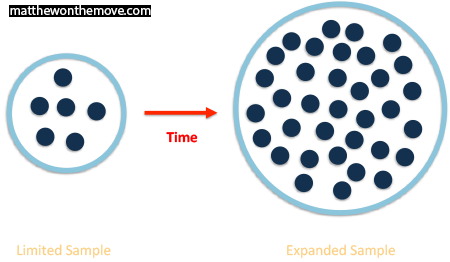

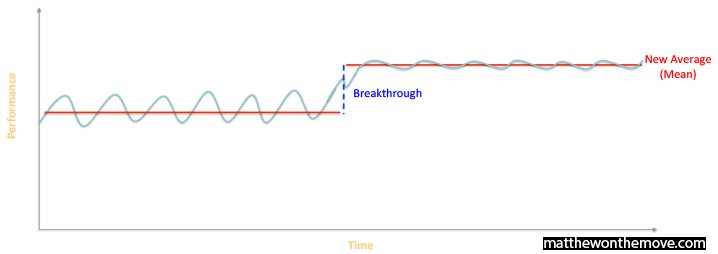
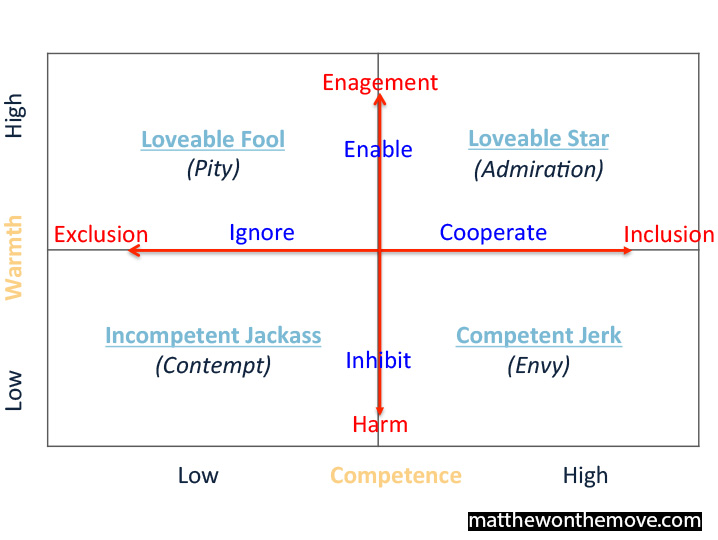

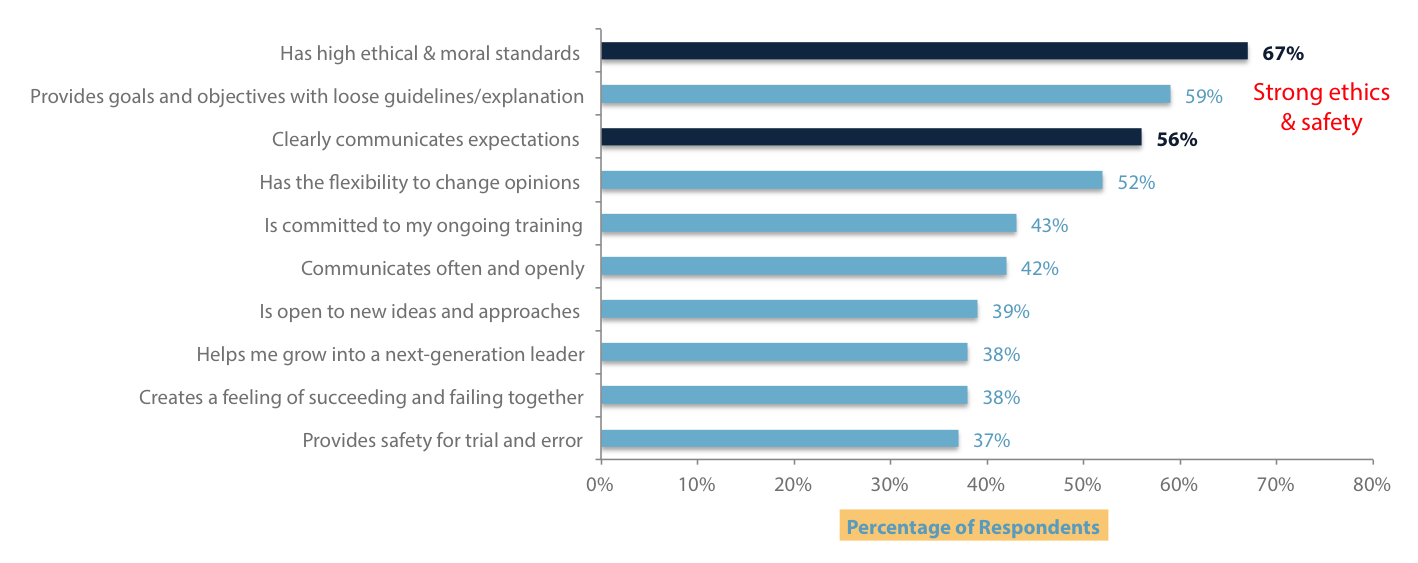
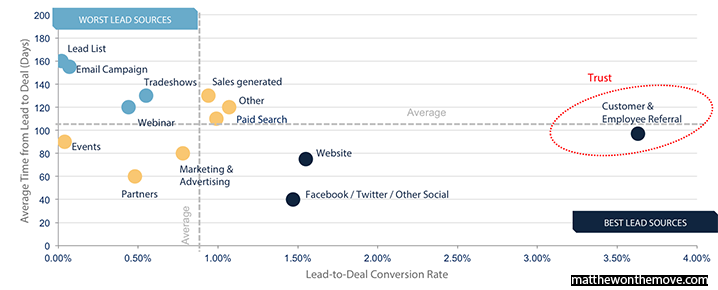
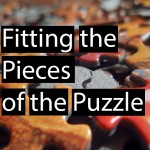

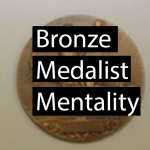

First of all, can I just say this is a wonderful, clearly well thought out and well written piece?! You never seize to impress!! By the way, I only got through 3/4 of it cause it 2am and its been a long day but “I’LL BE BACK” in the words of the Terminator. More feedback I’ll share especially on the Reputation: Warmth vs Competence exploration, totally valid but I don’t need to tell you that. Looking forward to reading with a clear hear the “All Roads lead to trust” portion. Can you tell that I loved this post? I really did because it was a good description of my current work life situation and how that affects my perception of others or their perception of me and how I am choosing to deal with that. My faith as a believer really does play a BIG role in how I try to maneuver these frameworks and my current status as an International Black (really, African but I don’t know, who cares to make a differentiation past the over simplification of what can be seen?!) YOUNG, FEMALE, GRADUATE Professional worker, which seems to allosterically inhibit my freedom and positioning. I guess it’s all about perspective to handle these things, because like they said in my Marketing class “Your perception is your reality”. Talk soon Matt, bisous x
Thanks Kunbi for the kind words! I agree that perception is reality (impressions both good and bad do remain), and I could only imagine what sort of issues you have to manage. As a fellow friend said, the takeaway is be good to people, always do your best, and live with integrity.
Great post! Reminds me of the old saying (by Maya Angelou?) that “people won’t remember what you said or did, but they will remember how you made them feel.” When I got promoted to manager, I was conflicted about what type of management style to adopt. It seemed only ‘competent jerks’ were able to succeed in the organization, as I saw several “lovable fools” get walked over by their subordinates, perhaps amplified in a Korean cultural setting. It was quite discouraging to see a deep-rooted perception in the organization that integrity and competence are mutually exclusive traits, especially among management.